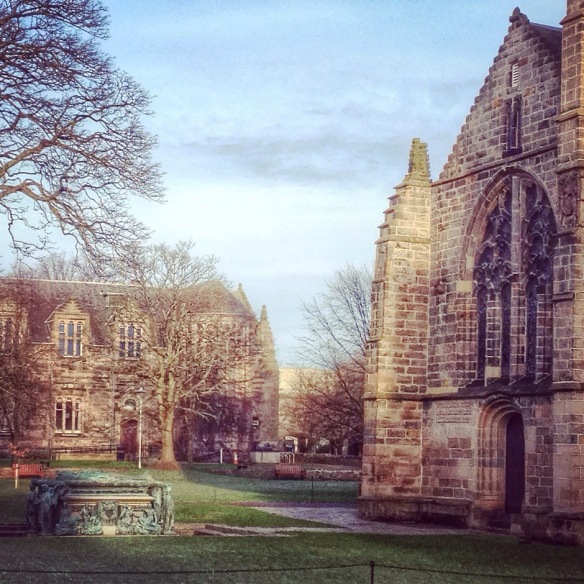Monthly Archives: December 2014
Merry Christmas from the University of Aberdeen
Digging up the ‘Spanish Vikings’
 The fearsome reputation of the Vikings has made them the subject of countless exhibitions, books and films – however, surprisingly little is known about their more southerly exploits in Spain.
The fearsome reputation of the Vikings has made them the subject of countless exhibitions, books and films – however, surprisingly little is known about their more southerly exploits in Spain.
No comprehensive archaeological study of Viking sites in Spain has ever been carried out and now a University of Aberdeen researcher plans to dig up the ‘Spanish Vikings’ for the first time.
Dr Irene García Losquiño from the University of Aberdeen’s Centre for Scandinavian Studies, says she was surprised how little is known, even in academic circles, about the Vikings movements in Spain.
 “There are written accounts of Viking raids in northern Spain but, archaeologically, absolutely nothing has been done on an academic scale,” she said. “Internationally, there is only a vague knowledge that the Vikings went there. They visited the area from around 840 until the 11th century but there is no realisation that there is this vast thing to be explored. Most of the studies focus on their activities in other countries such as Britain and Ireland.”
“There are written accounts of Viking raids in northern Spain but, archaeologically, absolutely nothing has been done on an academic scale,” she said. “Internationally, there is only a vague knowledge that the Vikings went there. They visited the area from around 840 until the 11th century but there is no realisation that there is this vast thing to be explored. Most of the studies focus on their activities in other countries such as Britain and Ireland.”
She said: “Excitingly, I am preparing a dig in spring. We are going to several sites that have very unusual shapes with metal detectors. We have been comparing aerial maps from the 1950s with up-to-date satellite images and they look exactly like Viking camps that have been found elsewhere. We want to find something datable and trace their movements, through where they established camps.
Dr García Losquiño is raising funding for producing a documentary on Vikings in Galicia. This will be made available in her Viking Iberia project, which can be viewed here: http://irgalo10.wix.com/vikingiberia
Aberdeen Scientists set new record for filming the world’s deepest fish
Scientists at the University of Aberdeen have set a new record for the world’s deepest fish, filmed in the Mariana Trench – the deepest place on Earth.
The new finding was just one of several new species discovered, as well as the first footage of the mysterious ‘supergiant’ amphipod filmed alive.
The footage was recorded using the UK’s deepest diving vehicle – the Hadal-Lander – a vehicle designed and built entirely in Aberdeenshire, Scotland.

